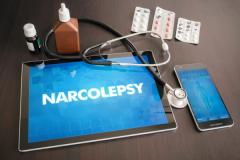
Role of Pitolisant in Management of Narcolepsy
Panelists discuss the clinical and practical advantages of pitolisant for patients with frequent cataplexy and concerns about controlled substances, highlighting its dual efficacy, favorable safety profile, and flexible dosing as key features that support a patient-centered, stigma-conscious approach to narcolepsy care.
Episodes in this series

In this portion of the discussion, the clinicians examine the suitability of pitolisant (brand name Wakix) for a patient with narcolepsy with frequent cataplexy and a preference for noncontrolled treatments. Given the patient's goal of reducing cataplexy episodes—occurring 4 to 5 times per week—and his desire to avoid scheduled substances, pitolisant stands out as a strong first-line option. It is the only FDA-approved treatment for both excessive daytime sleepiness and cataplexy that is not a controlled substance, making it especially appealing for patients concerned about dependence or stigma, particularly those with a family history of substance use disorder.
The impact of cataplexy extends beyond physical symptoms. The clinicians highlight how patients may avoid emotionally charged situations to prevent triggering episodes, potentially leading to social withdrawal or emotional suppression. Safety is another concern, as cataplexy can occur suddenly and compromise physical stability. This reinforces the need to manage symptoms effectively and with sensitivity to a patient’s lived experience. Pitolisant’s profile makes it a promising option in such cases, as it offers dual-symptom relief without the regulatory complications or concerns tied to stimulants or oxybates.
In terms of practical use, pitolisant is described as easy to initiate and highly individualizable. Clinicians can titrate dosing based on patient response and tolerability, which enhances its flexibility. Since it is metabolized through the liver (notably via CYP2D6, which is also used by many antidepressants), care must be taken to manage potential drug interactions. However, these are rarely prohibitive. Adverse effects are generally mild, and discontinuation rates due to adverse events are low (~3%). Multiple dosage strengths allow clinicians to fine-tune the dose to balance efficacy and adverse effects. Overall, pitolisant supports a personalized, collaborative treatment approach, allowing providers and patients to adapt the regimen over time based on evolving needs and outcomes.
Newsletter
Receive trusted psychiatric news, expert analysis, and clinical insights — subscribe today to support your practice and your patients.
















